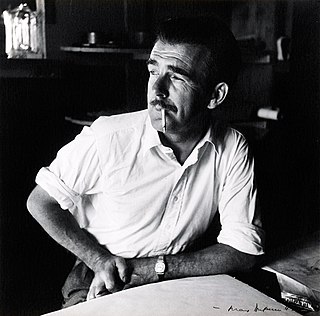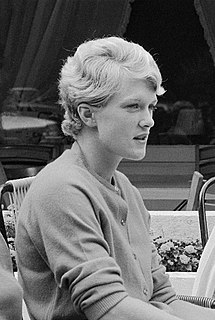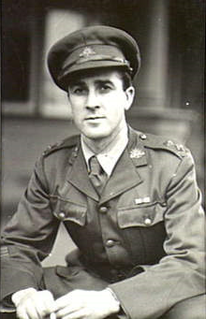
The Archibald Prize was the first major prize for portraiture in Australian art. It was first awarded in 1921 after the receipt of a bequest from J. F. Archibald, the editor of The Bulletin who died in 1919. It is now administered by the trustees of the Art Gallery of New South Wales and awarded for "the best portrait, preferentially of some man or woman distinguished in Art, Letters, Science or Politics, painted by an artist resident in Australia during the twelve months preceding the date fixed by the trustees for sending in the pictures." The Archibald Prize has been awarded annually since 1921 and since July 2015 the prize has been AU$100,000.

Helena Rubinstein was a Polish-American businesswoman, art collector, and philanthropist. A cosmetics entrepreneur, and was the founder and eponym of Helena Rubinstein Incorporated cosmetics company, which made her one of the world's richest women.

Sir William (Bill) Dobell was a renowned Australian portrait and landscape artist of the 20th century. Dobell won the Archibald Prize, Australia's premier award for portrait artists on three occasions. The Dobell Prize is named in his honour.

Sir Ivor Henry Thomas Hele, CBE was an Australian artist noted for portraiture. He was Australia's longest serving war artist and completed more commissioned works than any other in the history of Australian art.

Judy Cassab, born Judit Kaszab, was an Australian painter.
Jack Carington Smith was an Australian artist from Launceston, Tasmania. Born simply "Smith", he adopted "Carington Smith" as his surname around 1936 when he won a travelling scholarship which enabled him to study at the Royal Academy of Arts, London.

Robyn Ebbern is an Australian former tennis player who was active in the 1960s.
Judith Anne Stone AM is an Australian pop and country music singer. For much of the 1960s she was a regular performer on Bandstand, a pop music TV show, hosted by Brian Henderson. Stone's top 20 singles on the national charts are "I'll Step Down", "4,003,221 Tears from Now", "Born a Woman" and "Would You Lay with Me". On the Queen's Birthday Honours List of June 2006, Stone was awarded a Member of the Order of Australia, with the citation, "For service to the community as an entertainer at fundraising events for a range of charitable organisations, and as a singer."
Vladimir Meškėnas is an Australian expressionist painter and portraitist in oil and pastel, who has been a frequent Archibald Prize finalist.

Australian tennis player Rod Laver had a long-running and friendly rivalry with countryman Ken Rosewall. In 1956 both players toured in the amateur circuit but never faced each other. Rosewall turned professional in 1957 and the two players did not meet until January 1963 when Laver turned pro. They played many times until 1977 when both semi-retired from the main tour.

Marea Gazzard AO, CBE was an Australian sculptor and ceramicist.
Harold Frederick Weaver Hawkins (1893–1977) was an English painter who specialized in "ambitious, sometimes mural-sized, modernist allegories of morality for an age of atomic warfare and global over-population."
Rodney Armour "Rod" Milgate was an Australian painter and playwright. He was a Professor of the Visual Arts School of the (then) City Art Institute, University of NSW and newsreader.
Phillip Grenville Mann (1921–1990) was an Australian writer.
Wednesday Theatre is a 1960s Australian anthology show which aired on the ABC.
Patrick Barton is an Australian TV director best known for his productions in the 1960s.
James Upshaw is an Australian producer and director, best known for his work in TV in the 1960s.
The New Zealand Wills Masters was a golf tournament held in New Zealand played from 1965 to 1967. The Wills Classic had been held in New Zealand in 1963 and 1964. A Wills Masters tournament was also held in Australia from 1963. The tournament had prize money of NZ£2,000 in 1966 and NZ$4,000 in 1967. The sponsor was W.D. & H.O. Wills, a cigarette manufacturer.
The Wills Masters was a golf tournament held in Australia and played annually from 1963 to 1975. The Wills Classic had been held in Australia from 1960 and 1962. Total prize money from 1963 to 1965 was A£4,000. In 1966 and 1967 it was A$8,000 increasing to A$10,000 in 1968, A$20,000 from 1969 to 1971, A$25,000 in 1972 and A$35,000 from 1973 to 1975. The sponsor was W.D. & H.O. Wills, a cigarette manufacturer.









